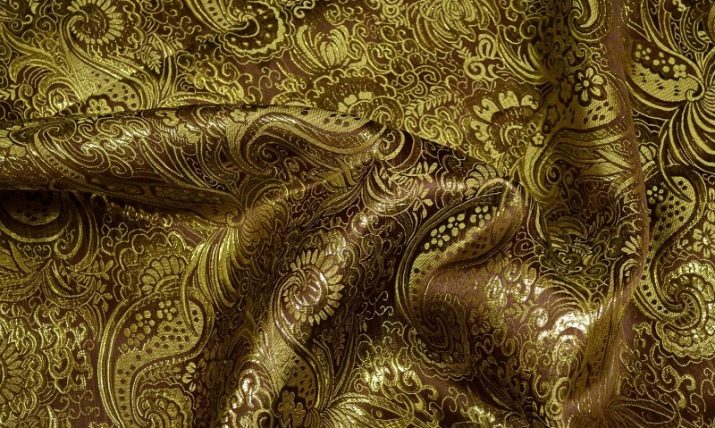What does brocade look like and what is sewn from it?
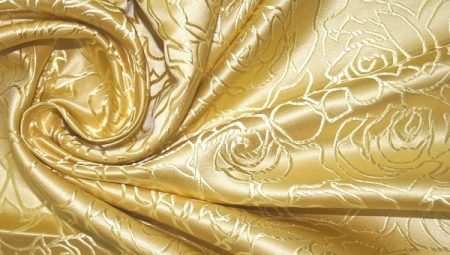
Brocade has always been considered an attribute of luxury that speaks of a high social status. Refined, dense fabric with iridescence of intricate patterns has existed since the era of the reign of emperors and kings. At that time, brocade was used to sew outfits for social receptions and court balls. Today, celebrities are filmed in luxurious attire, theater stars appear on the stage.
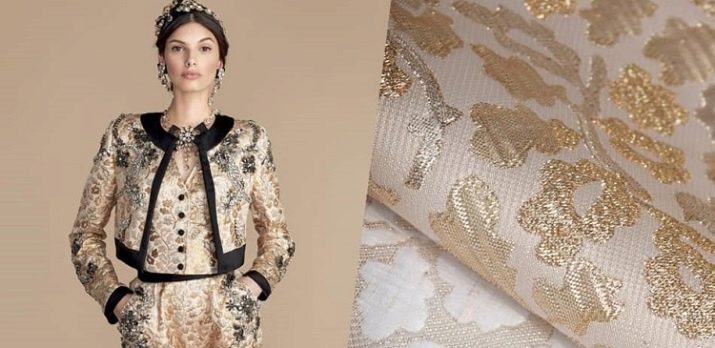

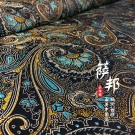
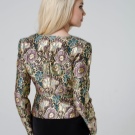
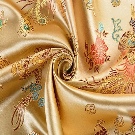

History of appearance
The word “brocade” has Persian roots, “parce” translated into Russian means “matter”. Gold threads were first woven into silk in the 10th century in China. The fabric was made by hand by order of the Chinese emperors. Then the manufacturing technology was strictly forbidden to be made public. From the Celestial Empire, the brocade came to India, where it was complemented by an original floral pattern, and the priests tried it on. The brocade production technique reached its peak in Damascus. During that period, the fabric became famous all over the world.
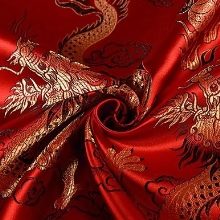
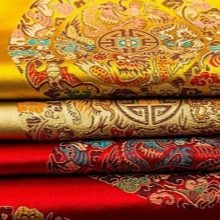
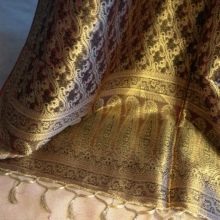
Islamic motives also left their distinctive imprint on the construction of patterns: colorful dragons were replaced by other patterns. Soon the secret of making luxurious fabrics was mastered in Constantinople, and from there the majestic fabric hit the shelves of the European market. Their masters appeared in Byzantium, and then the French and Dutch mastered the art of making brocade, passing their experience to Flanders, Germany and so on.

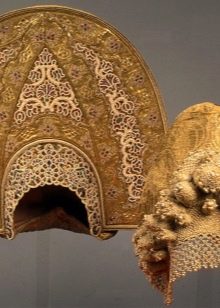
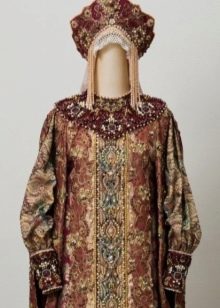
In the Middle Ages in Europe, the manufacture of brocade was automated. Cloths began to be weaved on looms, and precious threads were replaced by metal counterparts. A cheaper version of brocade was launched into industrial production.In Russia, they learned about brocade in the 18th century, and the iridescent matter literally immediately came to the court. The new symbol of luxury and imperial grandeur was dubbed the "bastard" and was used for sewing ceremonial clothes, church decorations, as well as for interior decoration in wealthy houses.
To reduce production costs, instead of silk, they began to use less expensive fabric, and precious metals in the threads for the pattern were replaced by cotton thread, entwined with a thin metal fishing line. From the status of gold-woven brocade, only the name remained.
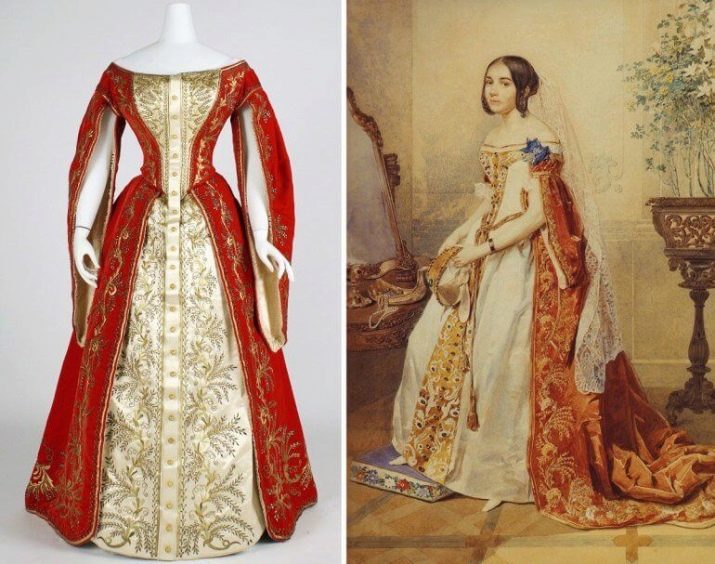
With the invention of artificial fibers, the cost of fabric was reduced significantly. And the decision to add lurex - a shiny film woven into the fabric to give it shine - turned it into an affordable and practical material. Elastane was added to the composition, giving the brocade the missing softness.
Now the fabric was not only light, but also pleasant to the touch. In the modern era, fabric is made both by hand, adhering to the most ancient technologies, and on weaving looms on an industrial scale. Over the centuries, the material retains its exclusivity.
The brocade fabric with a shiny surface is still covered with an intricate pattern of large elements that visually adds volume and arouses increased interest.
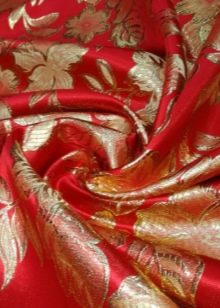

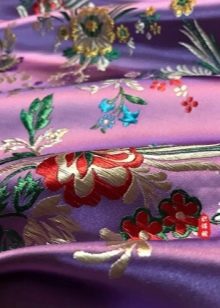
Characteristic
In the textile industry of modern brocade, silk is replaced by viscose fabric or synthetics. A pattern of metallic threads looms on the smooth surface. In ancient times, these were precious metals, but now the trim is woven from lurex. To the touch, the front part of the matter turns out to be hard and dense. The color of the fabric looks deep and rich. Canvases of gold, red, blue and green shades are popular. The visual feature of brocade is its noble shine, complemented by color tints and play of light.
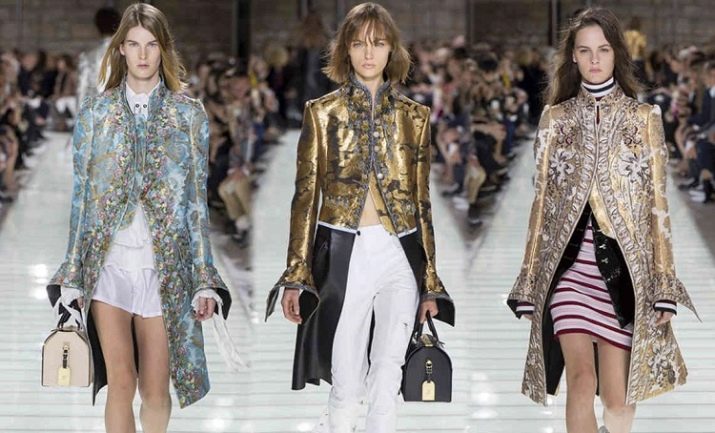
Description of the characteristics of textiles.
- Smart and aristocratic look. Often used for evening wear and luxurious interiors.
- Good thermoregulation, hygroscopicity and breathability. There is no discomfort in brocade clothes, while it is comfortable and does not wrinkle.
- Rigidity and dimensional stability give the brocade the ability to easily drape in soft, rounded folds.
- High density of fabric. This factor allows you not to use lining from other fabrics when sewing garments.
- Wear resistance due to the addition of metallic threads. Thanks to these threads, the fabric looks very impressive and differs from other shiny fabrics.
- It can be successfully combined with other materials, which attracts the attention of many clothing and interior designers.
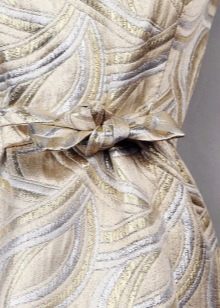
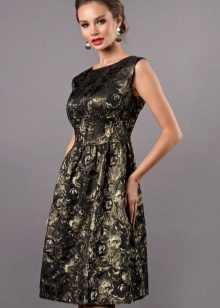
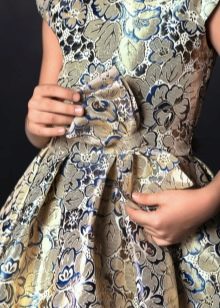
The advantageous side of the brocade fabric also has an unattractive "underside".
- Over time, metal filaments lose their original luster when exposed to ultraviolet radiation, air and moisture.
- Mechanical damage to brocade is almost impossible to fix. There are fewer problems with fabrics containing artificial metallic threads.
- Brocade fabric is demanding to care for, which makes it difficult to use in everyday life.
- Even artificial brocade woven with the addition of lycra or viscose has a very high cost.


Species overview
The material is distinguished by the method of weaving - manual and industrial, as well as by the type of brocade, depending on the composition. Classic brocade based on silk. There are two types - embroidered and jacquard. It is a tough fabric with no elasticity. At the same time, it does not wrinkle, keeps the given shape and looks great draped. The silk variety has several synonymous names: baberek, brokat, brocade, altabas, pestilence.
Viscose brocade (synthetic). Inelastic artificial fabric created using wood pulp. Viscose fibers give the fabric a soft sheen. Lurex, a metallized (foil-clad) synthetic thread, can be added to the composition.
Like the traditional silk look, viscose does not wrinkle and retains its shape perfectly.
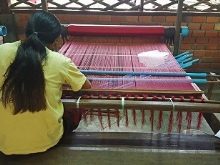
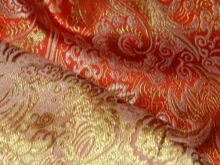
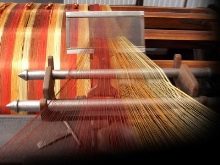
Lycra look (blended fabric). It is a smoother synthetic fiber fabric. The traditional stiffness of brocade is minimally felt in it, since elastane is added to the base threads.
Jacquard option. Such a canvas is distinguished by a volumetric pattern with convex patterns on a durable surface.
Less common is a kind of brocade with wool or cotton fibers. Such additives help to improve the hygienic and heat-saving properties of the fabric. The most popular types are fabrics based on lycra, viscose and, of course, natural silk. All information about the composition is indicated on the product labels. Each new component added to the fabric gives it special properties.
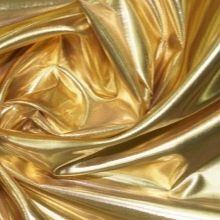

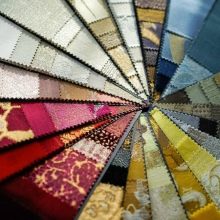
Manufacturers
Brocade is produced in China, India, Iran, Korea, Turkey and many European countries, including Russia. In the first two states, ancient weaving technologies are still used. Hand-made products are especially highly valued and are made only for individual orders. Large amounts of fabric and more budgetary types are produced using modern technologies and innovative materials.
The most famous and expensive in the world is brocade, woven on wooden looms by the hands of Nanjing craftsmen. On the territory of South China, production technology is included in the list of intangible cultural heritage of humanity. Weavers from Nanjing have been making real precious brocade with gold leaf threads for 2,500 years.
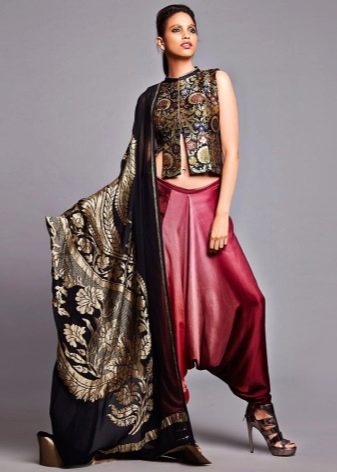
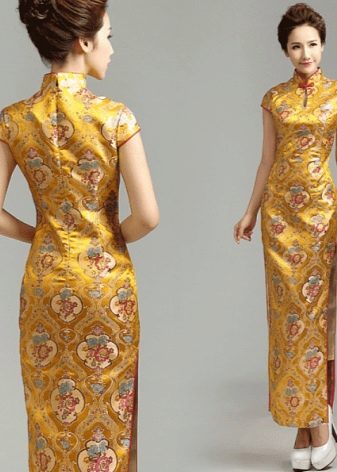
The second name of Nanjing brocade is "cloudy", which is due to the light airy pattern, iridescent in different colors depending on the viewing angle. It is softer to the touch and is divided into several varieties:
- patterned;
- satin (kuduan);
- gold;
- kujin.
Of all these varieties, only the patterned one is created by hand, and the rest are machine-processed.
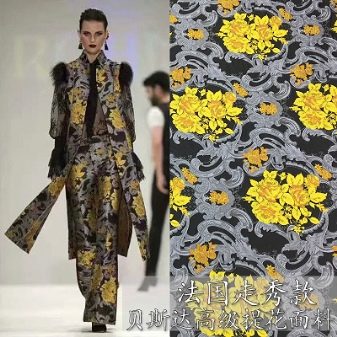
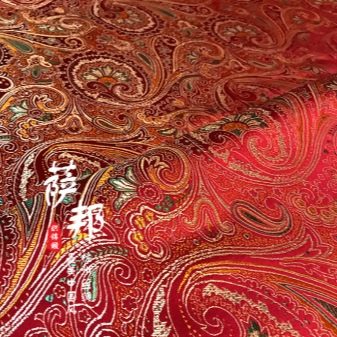
Gold-woven brocade from Nanjing is not inferior to the Indian variety - yamdani. This is the most expensive variety of the local brocade. The famous silk kinhab is a symbol of luxury, sewn with metal threads and decorated with delicate floral designs. Traditionally, the fabric is made to order and sewn from it ceremonial vestments, wedding dresses and other expensive outfits. In India, brides wear non-white dresses for their weddings. Bright brocade is considered a more presentable option for sewing decorations for the bride and groom.
Among the local population, such varieties of Indian brocade are popular as silk baffta, replete with golden strokes, and amru, a multicolored silk fabric of fine texture. In Europe, synthetic types of brocade are more commonly used. It turns out much cheaper and easier than natural. In Russia, the material is called “brooches” and is represented by patterned fabric, embroidered with colored silk.
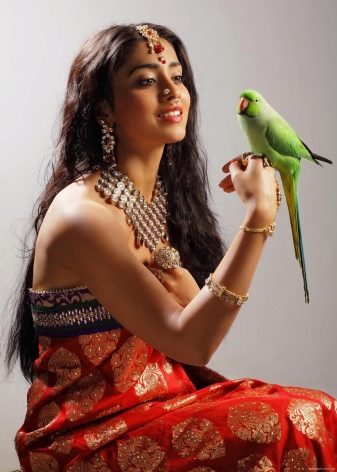
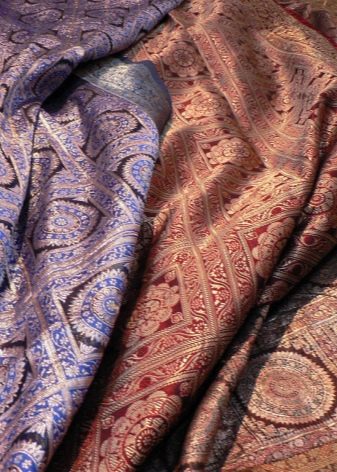
Areas of use
Iridescent brocade is used for sewing evening or festive dresses and accessories. Handbags, feminine suits, spectacular dresses and elegant royally-looking coats are sewn from it. Luxurious clothing is designed to emphasize the solemnity of the event. In everyday life, shiny ceremonial fabric is rarely used. Only in China is the tradition of making brocade robes for the house still supported.
For the manufacture of things for everyday wear, a cheap type of brocade based on viscose or cotton is used. Brocade trousers, dresses and jackets are on sale. Wearing such clothes requires a thorough approach, some images can turn out to be more vulgar than beautiful.
In order for the product to have the same brightness, when cutting the brocade fabric, the direction of the threads and the pattern must be taken into account. Often, clothes made of heavy, shiny fabric are placed on a lining to keep the body comfortable.
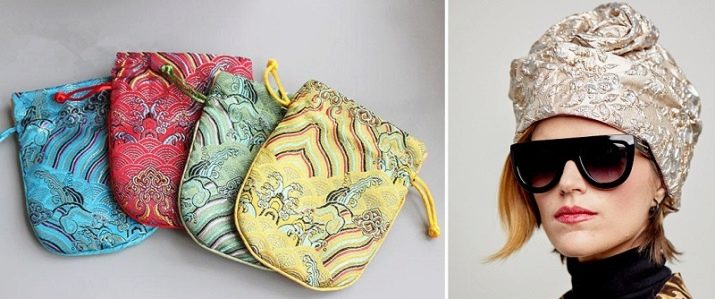
Lycra fabric is lighter and more elastic.Therefore, it is often used when creating summer wardrobe items. And also from it are often sewn concert costumes and clothing for figure skaters and gymnasts. No less noble materials - velvet and lace - are ideally combined with brocade. Differences in texture allow them to harmoniously complement each other. Products turn out to be more unusual and luxurious in appearance.
Brocade looks great in the decoration of a house, the interior of which is made in consonant styles: classic, baroque, renaissance, etc.... It gives the room a respectable gloss and a touch of luxury. One can only imagine or look at how beautiful the windows look in the frame of dense brocade curtains. In addition, they sparkle beautifully in the sun, and, if necessary, protect the room from light penetration. Interestingly, as the lighting changes, a different shade appears on the fabric.

Curtains
When making brocade curtains, they are often supplemented with veils and organza, which soften the weight of the brocade. These fabrics are perfectly combined and look advantageous against the contrast of their density.
Brocade draperies on the windows emphasize the richness of the room. They are beautiful not only in halls and living rooms, but also look great in the bedroom. Due to its structure, matter almost does not transmit sunlight. You can not only decorate the room, but also sleep longer in the morning.
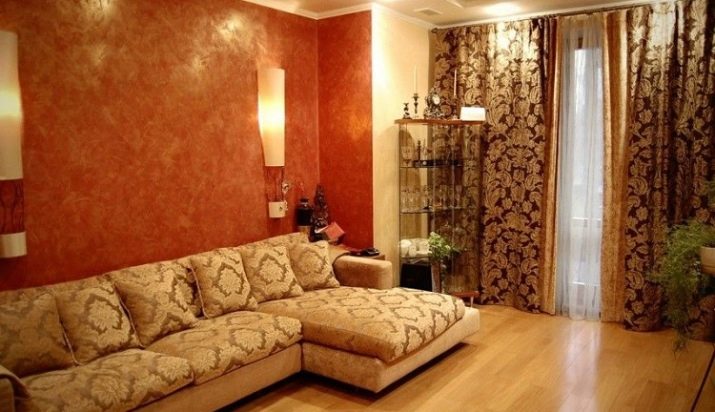
Furniture upholstery
Traditional brocade is now almost never used for upholstery. Except for the design of palace interiors or in the design of luxury homes for wealthy people. And in ancient times, it was widely used for the upholstery of furniture sets. In modern rooms decorated in a classical style (for example, baroque), it is allowed to use pieces of furniture covered with brocade. These should be piece items, not kits. For example, a chair or couch, located in the most conspicuous place.
Brocade is also used as a wall decoration material, creating an interior in an oriental or Indian style. You can complement the decor with brocade decorative pillows, canopies with hooks, bedspreads.
Oriental-style pillows are often made in the shape of an elongated cylinder. And it's even better when there are a lot of them, and they are of different shapes and shades.

Tablecloths
Tables covered with a brocade tablecloth look unusually festive. For the first time, such decoration on tables appeared in the East, and now shiny tablecloths are mainly used at celebrations in expensive banquet halls. A brocade tablecloth looks especially beautiful when the fabric covers the entire table, falling down the sides and forming iridescent waves of folds. Even the most ordinary-looking furniture will be adorned with a canvas with a rich history and a touch of oriental luxury.
This noble fabric is also used to sew napkins, chair covers, souvenirs and gift bags for packing them. In whatever area it is used, it is always possible to create a solemn mood and give the items an exquisite look and special chic.

Fabric care
It is recommended to dry-clean curtains and jackets made of brocade with metallic threads. Washing is contraindicated for them, because under the influence of temperature, acids or alkaline components, the threads lose their shine. If necessary, brocade fabric with silk, lurex, viscose and synthetics can be washed, but only in warm water at room temperature. Or in the washing machine, in the "delicate" mode. If the machine does not have such an option, select a washing mode at 30 degrees.
At home, it is important to use only products designed for delicate washing. The use of bleaches is not allowed. Stains are removed with a soft sponge, spreading a towel on the back of the item. Hand wash is preferable, but it should be done in warm water and soapy water. Sometimes you can do without washing, for example, when it comes to minor dirt on curtains, tablecloths and upholstery.You just need to gently vacuum them or walk on the shiny surface with a steam cleaner.
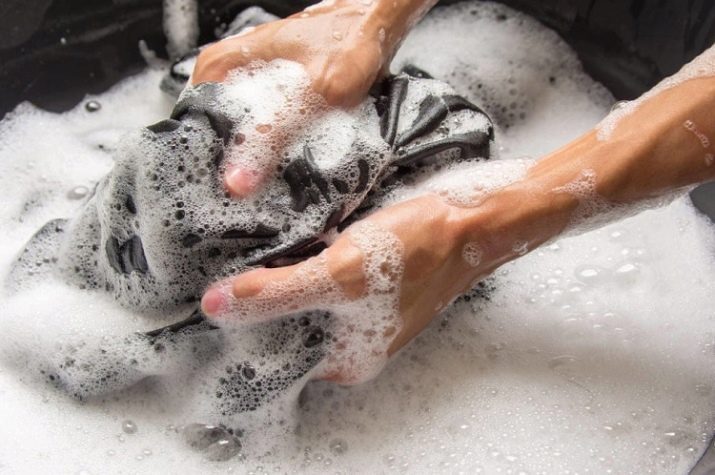
It is important to handle the material as indicated on the care label. Adhere to a certain temperature wash cycle. Machine spinning of aristocratic brocade is contraindicated. It is generally not recommended to squeeze this fabric. Only with your hands, wrapped in a towel, without making any effort. Drum drying is strictly prohibited. Brocaded things are dried only in natural conditions, without using additional heating. Products are always dried in a flattened form on a flat horizontal surface. It is important to do this away from direct sunlight and radiator batteries.
In most cases, ironing is not required, since the brocade practically does not wrinkle... But if necessary (for hygienic purposes), you can walk with a not too heated iron along the seams from the seamy side. It is advisable to iron the fabric through damp gauze or other thin natural fabric.
Timely care is essential to keeping things in order. The nobility of an interior with brocade elements is lost if they are covered with dust. With careful handling of brocade, it will delight the eye with its brilliance and beauty for a long time.
